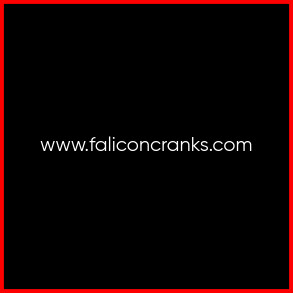Tzed250
Addicted to ArboristSite
Splitting the cases and welding the crank.........what say yea chainsaw gurus to that?
Remove all doubt.

Splitting the cases and welding the crank.........what say yea chainsaw gurus to that?
Splitting the cases and welding the crank.........what say yea chainsaw gurus to that?
By no means am I a guru, but I say go for it!
Welding two-stroke twin crankshafts is standard operating procedure. In fact just about any roller bearing crank used in a high perf application will have the pins welded. My TZ cranks were welded as well as the crank in my KZ1000 drag bike. A small weld prep and a pass with a TIG torch is all that is needed.
Wouldn't this be relative to the application ? This echo crank was designed to be pressed together so the pins could be high carbon (we really don't know the metallurgy) would the crank have to be treated before or after welding ? Also the crank plates are thin even very slight warp-age would be the end of it.
Tim
Procedure is to true the crank in V blocks.......Tig weld.......retrue.
Procedure is to true the crank in V blocks.......Tig weld.......retrue.
Doesn't re-truing after welding imply applying force beyond the yield point (it's now a fixed unit). Bending the plates is that what you are thinking, tricky business with just v blocks ? And if you can true the cranks before welding with your jig I know where there is one that could use your service.
Also if the pins are high carbon I would think you may have to preheat to avoid martensite and post heat to stress relieve ?
Not trying to be a trouble maker but I don't imagine these cranks/cases are easy or inexpensive to come by if things don't goes as planned so I would look at it from every angle before lighting the torch.
tm
Doesn't re-truing after welding imply applying force beyond the yield point (it's now a fixed unit). Bending the plates is that what you are thinking, tricky business with just v blocks ? And if you can true the cranks before welding with your jig I know where there is one that could use your service.
Also if the pins are high carbon I would think you may have to preheat to avoid martensite and post heat to stress relieve ?
Not trying to be a trouble maker but I don't imagine these cranks/cases are easy or inexpensive to come by if things don't goes as planned so I would look at it from every angle before lighting the torch.
tm

As stated by others, that crank issue should not be a problem, just some work. I am more concerned about port layout. Do you have any more data to share? Like exhaust port with and shape, transfer with in flow direction and corner radi, and also conrod length center to center.
I would like to calculate those time/areas to see where they really are, and what can be rectified. I am just curious
I have no way to accurately check center to center of the connecting rods. I will get some detailed pics of the jugs though.....
It's past my bedtime now though.
I would guess a Pie Coma
I would guess a Pie Coma
Maybe so....................but what a way to go!
Mike
Not that big of a deal. The welds are nothing more than glorified tacks. Normally the crank is not pulled out of true
The correct way to check a built up crank is between centers, with a dial indicator on each main journal.
See here:

+2
Unsubscribing, tired of tapatalk notifications every 15 minutes, coming to look, and it just being bull crap from trolls. Call me if this thread ever gets back on topic, it really is a sweet project.
Sent from my DROID RAZR using Tapatalk 2
I hate it when I miss one of Randy's pies. :msp_mad:
Enter your email address to join: